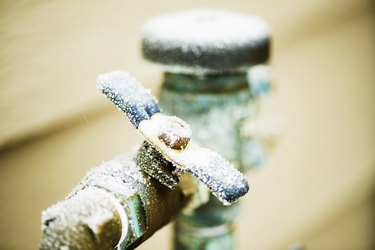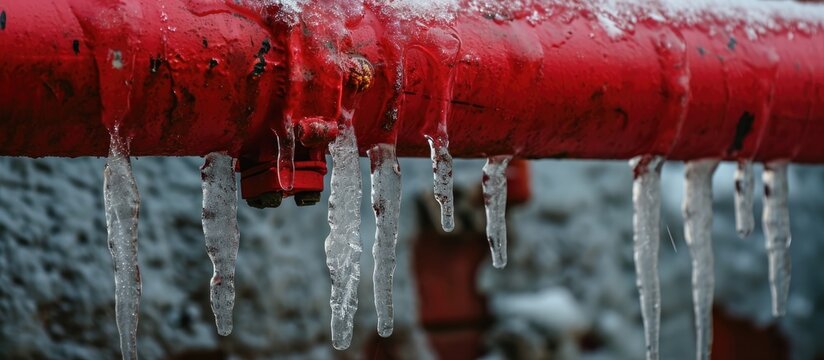Important Advice to Prevent Frozen Pipes in Cold Weather
Call TodayThe publisher is making a number of great annotation about Preventing and dealing with frozen pipes in general in the content underneath.

Winter can wreak havoc on your plumbing, specifically by freezing pipes. Right here's just how to prevent it from taking place and what to do if it does.
Intro
As temperatures drop, the danger of icy pipelines increases, possibly causing costly fixings and water damage. Comprehending just how to avoid icy pipelines is crucial for house owners in cold environments.
Understanding Frozen Pipelines
What causes pipelines to freeze?
Pipelines ice up when subjected to temperature levels below 32 ° F (0 ° C) for prolonged durations. As water inside the pipelines freezes, it increases, taxing the pipeline wall surfaces and potentially causing them to rupture.
Risks and problems
Frozen pipelines can cause water system disturbances, residential or commercial property damages, and pricey repairs. Burst pipelines can flood homes and trigger substantial architectural damage.
Signs of Frozen Pipes
Identifying icy pipelines early can avoid them from breaking.
Exactly how to determine frozen pipelines
Try to find decreased water flow from taps, unusual smells or sounds from pipes, and noticeable frost on exposed pipelines.
Avoidance Tips
Protecting prone pipelines
Cover pipelines in insulation sleeves or use warm tape to shield them from freezing temperatures. Concentrate on pipes in unheated or external locations of the home.
Home heating techniques
Keep interior spaces adequately warmed, specifically locations with plumbing. Open up cupboard doors to permit cozy air to flow around pipes under sinks.
Safeguarding Exterior Pipes
Yard tubes and exterior taps
Disconnect and drain yard tubes before winter season. Mount frost-proof spigots or cover exterior taps with protected caps.
What to Do If Your Pipelines Freeze
Immediate actions to take
If you think frozen pipelines, keep taps open up to soothe stress as the ice thaws. Use a hairdryer or towels taken in hot water to thaw pipelines gradually.
Long-Term Solutions
Architectural changes
Take into consideration rerouting pipes away from outside walls or unheated locations. Add extra insulation to attic rooms, basements, and crawl spaces.
Upgrading insulation
Invest in top quality insulation for pipes, attic rooms, and wall surfaces. Proper insulation aids keep consistent temperature levels and decreases the danger of frozen pipes.
Final thought
Avoiding frozen pipes requires positive measures and quick actions. By recognizing the reasons, indicators, and preventive measures, homeowners can protect their pipes throughout winter.
6 Proven Ways to Prevent Frozen Pipes and Protect Your Home
Disconnect and Drain Garden Hoses
Before winter arrives, start by disconnecting your garden hoses and draining any remaining water. Close the shut-off valves that supply outdoor hose bibs and leave the outdoor faucet open to allow any residual water to drain. For extra protection, consider using faucet covers throughout the colder months. It’s also important to drain water from any sprinkler supply lines following the manufacturer’s directions.
Insulate Exposed Pipes
Insulating your pipes is an effective way to prevent freezing. Pipe insulation is readily available at home improvement stores and is relatively inexpensive. Pay close attention to pipes in unheated areas such as the attic, basement, crawl spaces, or garage. Apply foam insulation generously to create a buffer against the cold. You can also wrap your pipes in heat tape or thermostat-controlled heat cables for added warmth.
Seal Air Leaks
Inspect your home for any cracks or openings that could let in cold air. Seal any holes around the piping in interior or exterior walls, as well as the sill plates where your home rests on its foundation. Additionally, make sure to keep your garage door closed unless you’re entering or exiting. Leaving it open creates a significant air leak that can lead to frozen pipes.
Allow Warm Air Circulation
During cold snaps, it’s essential to allow warm air to circulate evenly throughout your home. Leave interior doors ajar to promote better airflow. Open kitchen and bathroom cabinets to help distribute heat consistently around the rooms. If you have small children or pets, be sure to remove any household chemicals or potentially harmful cleaners from open cabinets for safety.
Let Faucets Drip
A small trickle of water can make a big difference in preventing ice formation inside your pipes. When temperatures drop significantly, start a drip of water from all faucets served by exposed pipes. This continuous flow helps prevent the water from freezing. Additionally, running a few faucets slightly can relieve pressure inside the pipes, reducing the chances of a rupture if the water inside does freeze.
https://choateshvac.com/6-proven-ways-to-prevent-frozen-pipes-and-protect-your-home/

Do you appreciate reading up on 6 Ways to Prevent Frozen Pipes? Post a remark down the page. We would be pleased to know your views about this content. We hope to see you back again before long. Those who enjoyed our blog entry kindly make sure you remember to share it. Thanks for your time. Don't hesitate to stop by our blog back soon.
Call Today